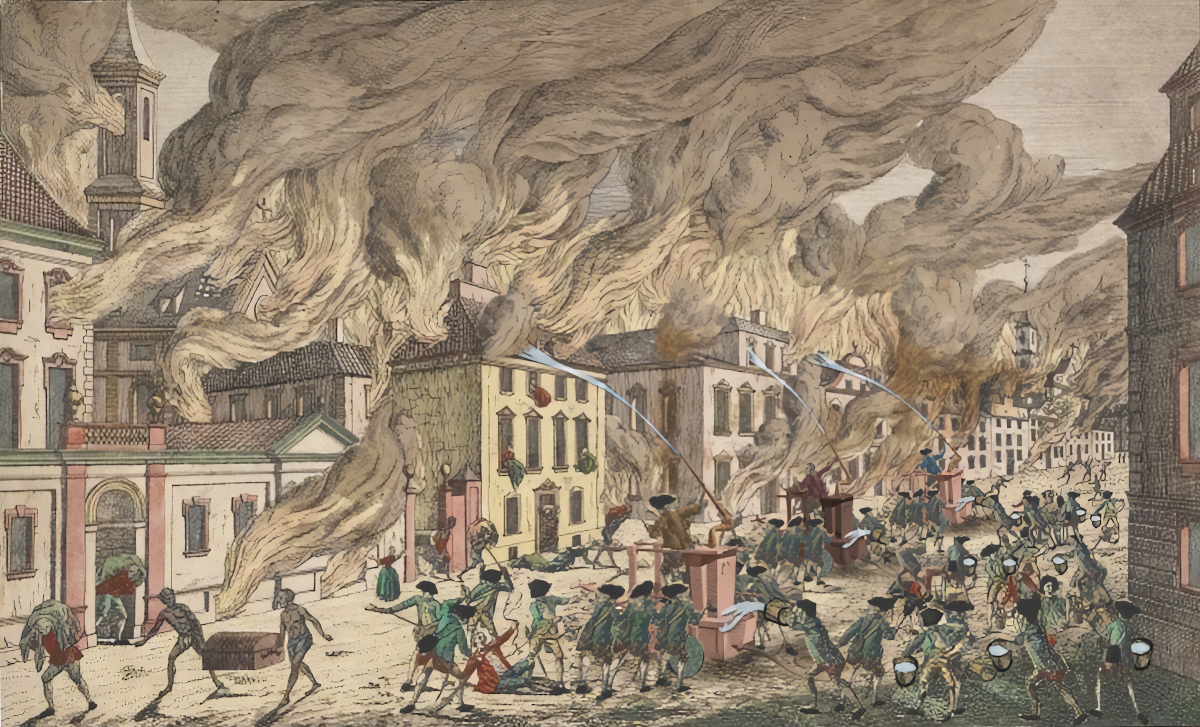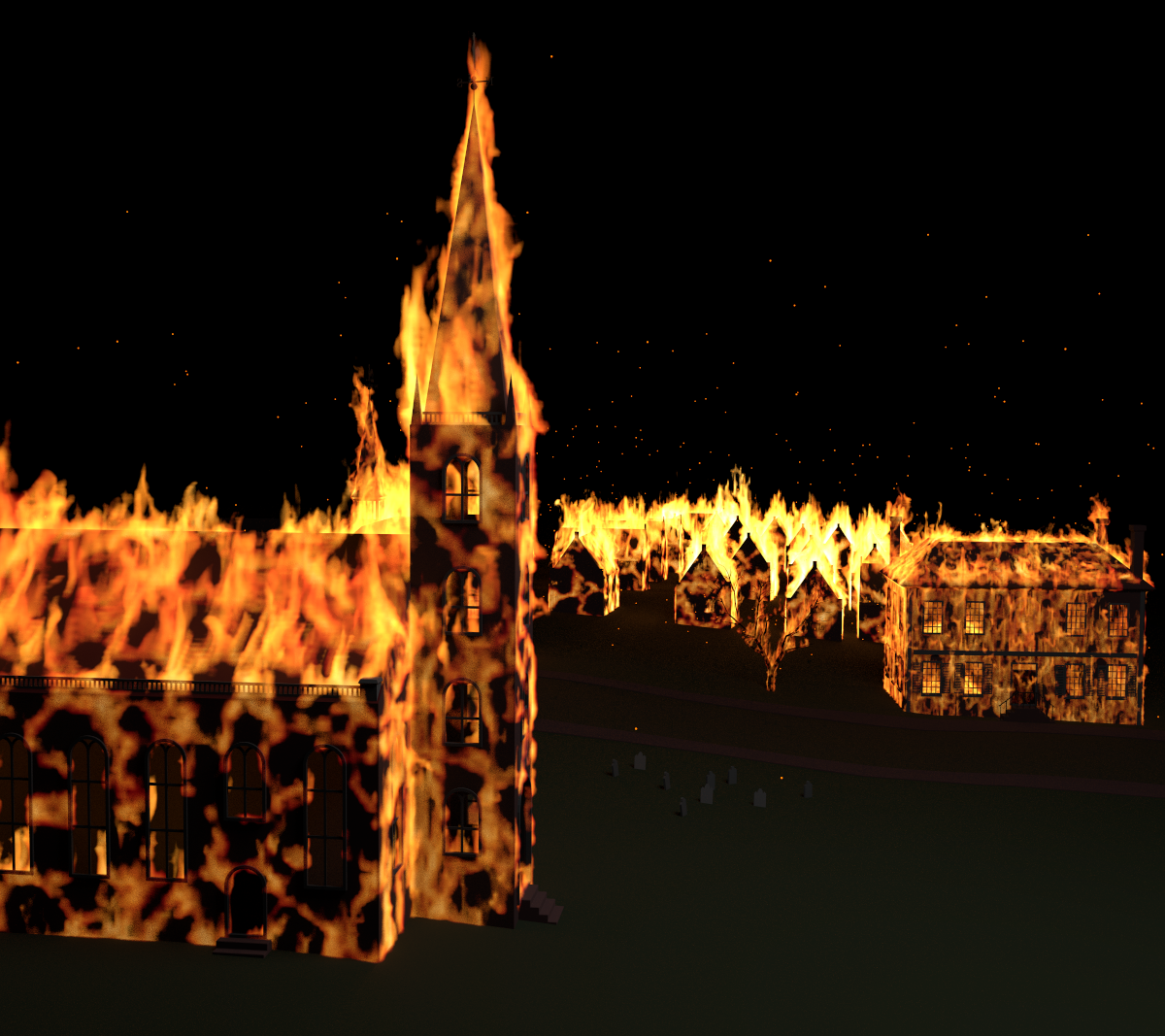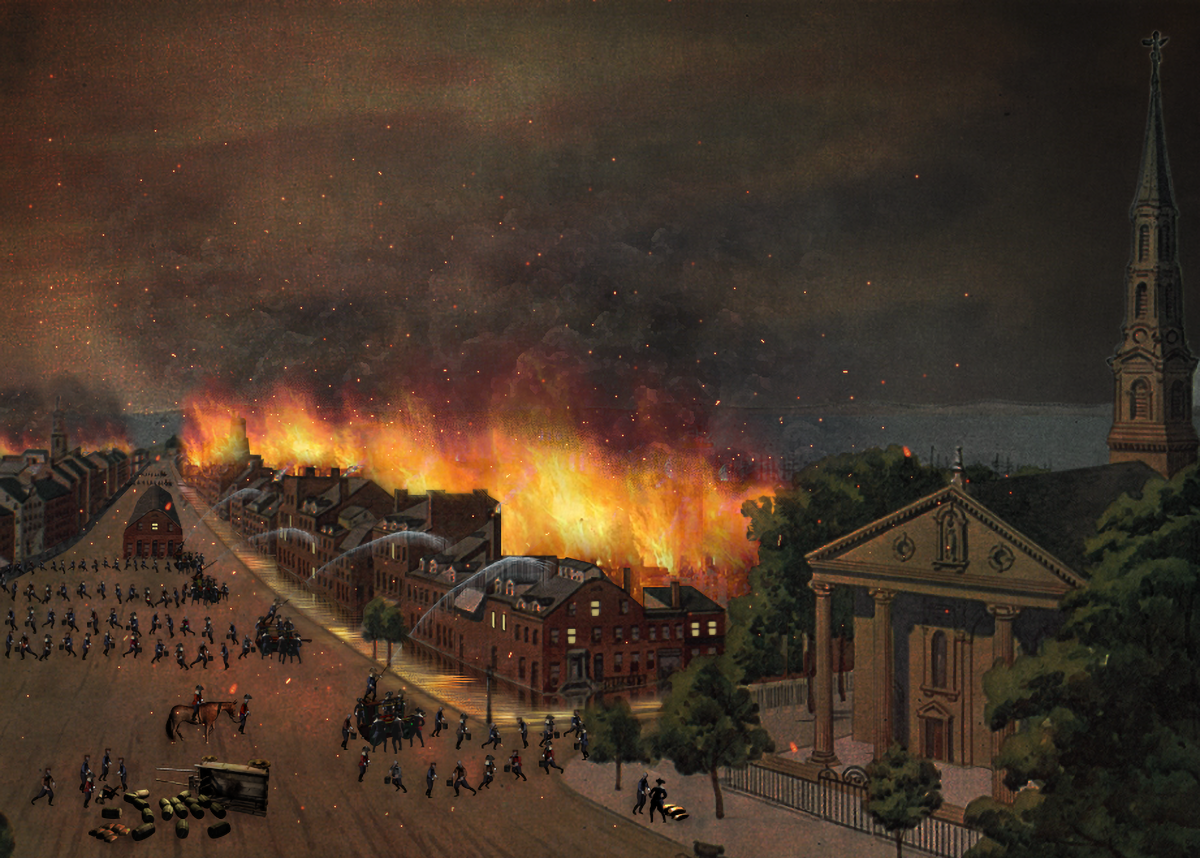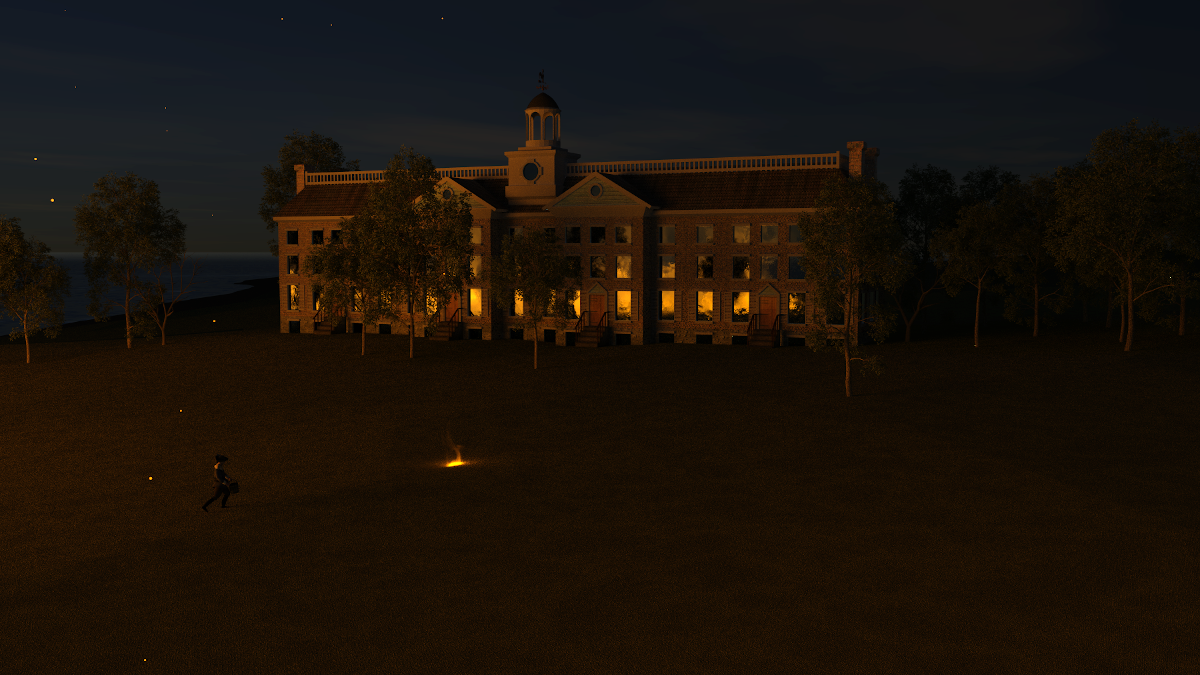Appendix #S5: Crucial Moments at the Great New York Fire of 1776

The FDNY at the Exchange
The FDNY rallied at the inception of the fire to save the Exchange, a large covered market with a second story meeting hall, located in the middle of lower Broad Street. They stopped the initial blaze from destroying the building even though it was just a few yards from the White Hall fire-storm. Although they saved the Exchange and the rest of the city east of Broad Street, they were too undermanned to keep the fire from blazing north.
References:
Although the original illustration by the European artist, who had no idea what Manhattan looked like, was largely imaginary, it has become a sort of iconic view of the scale and terror of the conflagration. Our illustration here has overlaid the original imaginary view from Europe with at least a modicum of reality - the battery of Newsham engines in the middle of what we subsume to be Broad Street. This, although as flawed as the street in the original illustration, does project the historically accurate narrative of the FDNY stopping the fire there.
The backdrop for this illustration is the engraving by Franz Xaver Habermann from The Miriam and Ira D. Wallach Division of Art, Prints and Photographs: Print Collection, The New York Public Library. "Representation du Feu terrible a Nouvelle Yorck" New York Public Library Digital Collections. Accessed February 16, 2022. https://digitalcollections.nypl.org/items/510d47e3-b9b0-a3d9-e040-e00a18064a99

Trinity Church succumbs to wall of flame
After the fire crossed Broadway about 2AM, it burned north towards the Lutheran Church, on the corner of Broadway and Rector Streets, the English Charity School, on Rector going down to the Hudson River, and Trinity Church. This view from just north of Trinity shows the fire as the spire of the church bursts into flames. That the fire had advanced faster than any firefighting forces could respond meant that the fire would keep burning, unstopped and unchallenged, north through the west side of Manhattan.
References:
This illustration is from the Docema model that informed several views in the book and on this web site of the two churches and the schoolhouse and include:
• Berrian, William An Historical Sketch of Trinity Church, New York (New York: Stanford and Swords, 139, Broadway. 1847) pages 23 - 29.
• Columbiana Collection, Columbia University, Drawing by Edward Punnett Chrystie, 1953, for the Columbia Bicentennial in 1954 (Shows English Charity School House where Columbia, as King's College, held its first classes in 1754. Also shown is back of Lutheran Church and front of Trinity tower.)
• http://www.stmatthewnyc.org/about/ has information and an illustration of the Lutheran Church built in 1729 and destroyed in 1776. The illustration is also at https://en.wikipedia.org/wiki/Evangelical_Lutheran_Church_of_St._Matthew_(New_York_City)

FDNY fights to save Broadway, the Oswego Market, and St. Paul's.
As the fire burned north of Trinity, the FDNY repositioned along Broadway to save its west side north of Trinity including the Market and the Church. The skilled use by the FDNY of its Newsham engines were a crucial factor in this fight; the British soldiers and sailors were the crucial manpower factor. As mentioned in the book, somebody fought this fire.
References:
This illustration modeled after several views of St. Paul's at https://en.wikipedia.org/wiki/St._Paul%27s_Chapel, and the several illustrations of Broadway circa 1800 typically at https://parlafoi.fr/2020/12/31/the-gospel-coalition-ou-langle-mort-des-neo-evangeliques/. The assumption for the illustration was that part of Broadway near St. Paul's had been saved, so the corner of Partition Street and Broadway in the illustration would not have changed that much from 1776. We did replace the Oswego Market in Broadway, since it was there in 1776, although it was gone by the time of later reference illustrations.

The Fire ends at King's College
The FDNY efforts along Broadway around St. Paul's weakened the fire. The open ground in front of King's College (later renamed Columbia) provided a fire break. Firemen, soldiers, and students extinguished sparks flying north, stopping the fire at Barkeley. As the blaze to the south reflected in the windows of the college shows, however, this fire still left its mark in the several blocks behind St. Paul's.
References:
Several illustrations of King's College can be found on various web sites including Columbia University's history segment and reproductions from the New York Public library.
• https://en.wikipedia.org/wiki/History_of_Columbia_University#References
• https://www.mountvernon.org/library/digitalhistory/digital-encyclopedia/article/kings-college/
• https://www.worldhistory.biz/modern-history/84282-king-s-college-columbia-university.html
